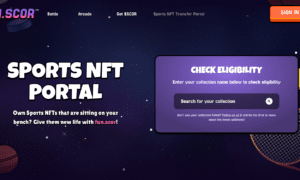In competitive gaming, raw skill often takes center stage. But there’s another, more subtle force at play—one that’s become increasingly important in the digital age: visual identity. From custom overlays on streaming channels to in-game character appearances, the aesthetic side of competition is influencing how players perform, how they’re perceived, and how they connect with wider audiences.
Looking Good, Playing Better?
Whether you’re on a solo grind or part of an esports squad, there’s no denying that visual expression has become a central part of the gaming experience. Players don’t just show up to win—they show up to stand out. That’s where customization comes in. Skins, cosmetics, avatars, emotes—they’re no longer just digital flair; they’re psychological armor, tools of intimidation, and a statement of individuality.
For games like Fortnite, visuals are practically baked into the strategy. While these enhancements won’t give you better aim, the impact on confidence and player presence is hard to ignore. Many gamers actively seek out unique character designs or rare loadouts. That’s why it’s common to see players exploring deals on Fortnite skins, aiming to curate a look that not only feels like them but also commands attention in a crowded arena.
From Pixels to Performance
This trend isn’t about vanity—it’s about performance under pressure. Visual distinction helps players feel immersed, more in control, and even more strategic. Sporting a rare or animated skin can change how you approach interactions with opponents. It can also alter how others perceive your skill level, often affecting gameplay indirectly.
In the fast-paced world of streaming, where every second is broadcast and scrutinized, aesthetics take on even greater weight. A unique appearance helps streamers remain memorable, reinforcing their brand across platforms. A carefully chosen skin becomes part of the persona. In high-stakes matches, that visual recognition can influence everything from team coordination to audience support.
The Influence of Audience Expectations
Viewers have come to expect not just high-level gameplay, but a full experience—visually engaging, narratively strong, and uniquely styled. As streamers and esports athletes invest in eye-catching themes and matching gear, they create ecosystems of identity that are tied to the visuals they showcase.
Skins, color schemes, even character dances—these all become part of a language that fans understand and relate to. For younger audiences especially, visual aesthetics are part of how they form connections with favorite players or franchises.
Why It’s More Than Just a Game
While gameplay mechanics define the boundaries of what’s possible, it’s the visual layer that breathes life into the competition. From creative emotes to themed character packs, players use appearance as a form of mental edge—and a way to assert dominance in style.
It’s no surprise, then, that access to these customizations has become as important as the game itself. Digital marketplaces like Eneba provide players with streamlined access to cosmetic items, allowing them to evolve their in-game identities with each new season or event. And in a landscape that prizes constant reinvention, that flexibility is key.
Style as Strategy
In today’s gaming culture, visuals are more than accessories—they’re tactical. Whether you’re aiming to distract, to dazzle, or just to feel more you, aesthetic choices can subtly influence how a match unfolds. And when milliseconds and split-second decisions matter, even the smallest edge counts.
So the next time you see a flashy skin zip past you in the final circle, don’t scoff—it might be doing more work than you think.



































